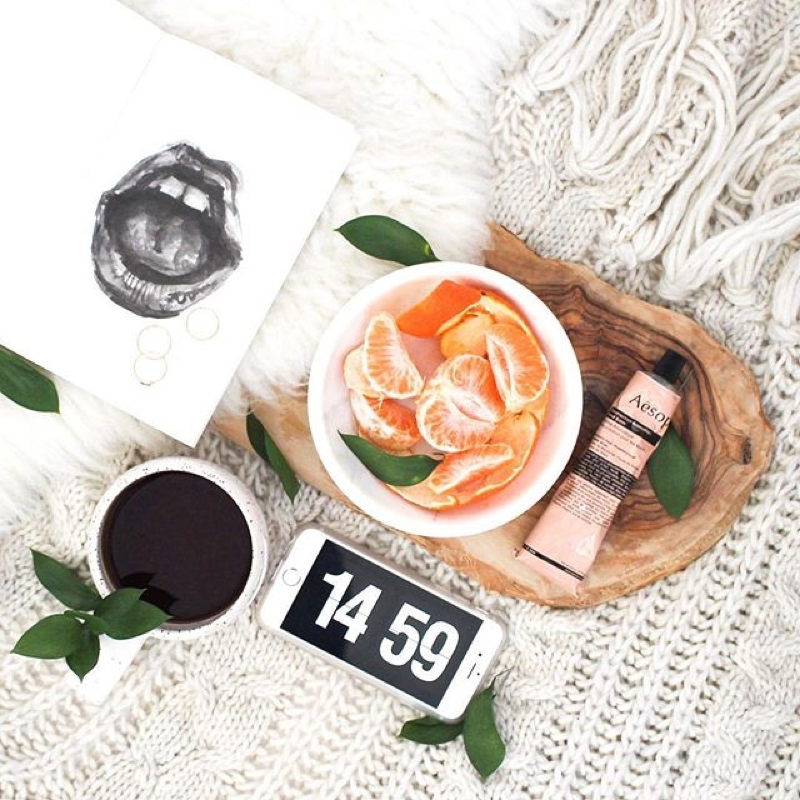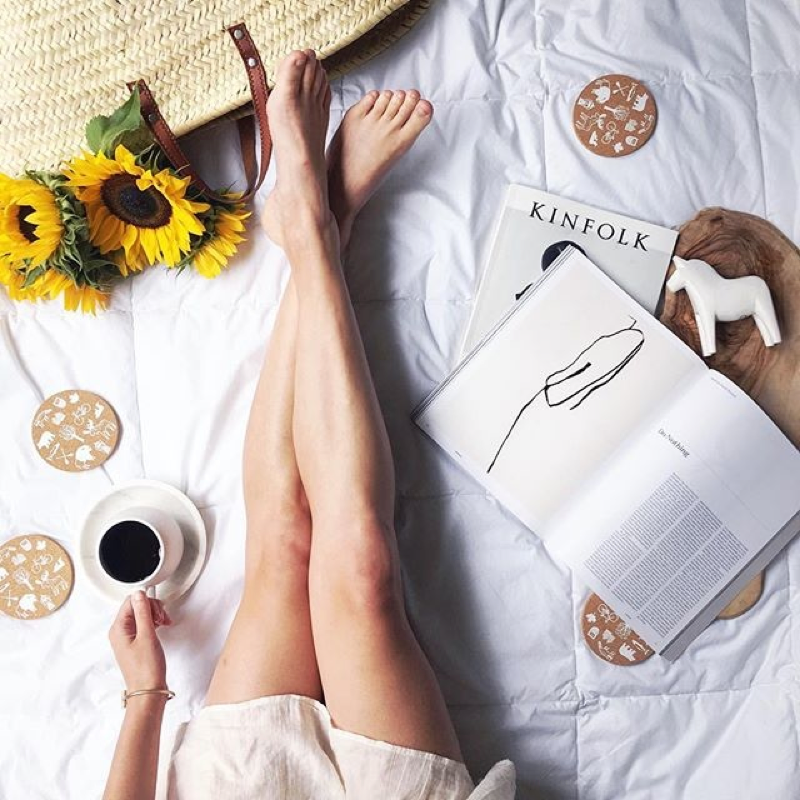
THE FIRST TIME I GOT PAID TO CREATE CONTENT…
It was for this letterboard company that reached out to me.
They were really the ones that propelled me down the path of content creation as a career.
It was such a great feeling to get paid for my work.
I loved the creative freedom around the project.
When I’m creating content I always start with a general idea. A theme. What do I want to convey?
I find it so important to have a story behind what I’m looking to create.
I’m big into kindness, support, uplifting others. I try to convey this on my own feed.
I know a flatlay isn’t an original idea, at the end of the day it’s just product and props.
But, I think if you convey a mood and narrative through colors, compositions, and color schemes, you can tell a meaningful story.
I’d like to create states of dreaminess and these unrealistic worlds that can speak to people at the same time.
So I go in with that idea.

WHERE I GO FOR INSPIRATION
I think it’s important to get your inspiration from a lot of places.
At times it can be a struggle for me to come up with a good idea.
I tend to look to arts, to books. Books that aren’t necessarily on the Top 10 Read List.
I think it’s important to feed your creativity in places where not everyone else is going.
Consuming different content introduces me to so many contradictory things that I wouldn’t necessarily think about myself, but it gets me thinking in a certain way.
That’s why I try to avoid Pinterest as a place for inspiration.
There’s a lot of the same and I think whether you want to or not you subconsciously absorb it.

MY CREATIVE PROCESS
I love using pen and paper.
I like to sketch out my flatlays first.
If I can come up with a fun play on words, I’ll write that down, then I’ll usually draw out what props I’m including in the flatlay.
I don’t think I’ll ever show anyone my sketches as they’re super rough, but it gives me an idea of what I want to do.
After my sketches, I get to the creating.
I’ll gather all my materials, my DSLR, tripod, backdrop, elements, and then I’ll just start composing.
A lot of times the end result is improvised.
I tend to stick to the color schemes of what I have planned out, but the elements and props included tend to change a little bit.
Sometimes I feel like “Oh I should add a bit more coziness”, or “I should add a quote here” or what have you. There’s a lot of improvisation that happens when I create, which I think is important.
I think it’s okay to deviate a little from your plan as long as the general idea is still there.
That’s the fun part.

When I’m in my space, I’m able to visualize the shot. As long as the lighting is great, I know when it’s a good shot.
When I first started I would take an exorbitant amount of photos, though I’ve learned now it’s not much of a necessity.
I think it’s a part of the learning process.
Experience teaches you where this prop should sit, how to play with lighting, how to be more efficient.

When I first started, I wasn’t confident at all in what I was creating.
I thought “this isn’t good”, “what am I doing?”
As I started to create more I learned more about what works for clients, what works for yourself.
I think it comes down to experience.
That’s why I tell people if you’re into something make it a part of your everyday.
When I go out and do stuff, my brain is always in flatlay mode.
When you make something a part of your everyday experience, it’s so ingrained in you that I feel like you just intuitively know what’s going to work and what’s not going to work.
Like all things, it takes time. But you never forget that first one.

MICHELLE’S TOP TIPS FOR CREATING A FLATLAY
1. Understand Composition
Composition plays a big role in creating a flatlay that will resonate. It’s important to balance out colors. I tend to do a lot more neutrals than color. I think it’s important to understand color and how they play with each other
2. Get Great Lighting
Understand how to play with lighting. Some people are like “I don’t like my flatlay because it has shadows, but I think that shadows can be good because it creates a mood. It’s about understanding the aesthetic of the flatlay you’re trying to create and letting lighting create that mood.
3. Get Your Props in Order
Sometimes what people will do is they’ll put all the same size props together. Or they’ll put too many circles. But it’s important to play with the size of your products, so the main event (the hero) stands out and everything else compliments it.
4. Be Yourself!
Just because something is trendy or popular doesn’t necessarily mean you need to hop on board if it doesn’t resonate with you. For personal flatlays, put as much of yourself in them. That’s how it resonates with the right people!

Michelle is a content creator focused on product styling and photography.
You can find her flatlays and other work on her Instagram @mich.elle.imagery
